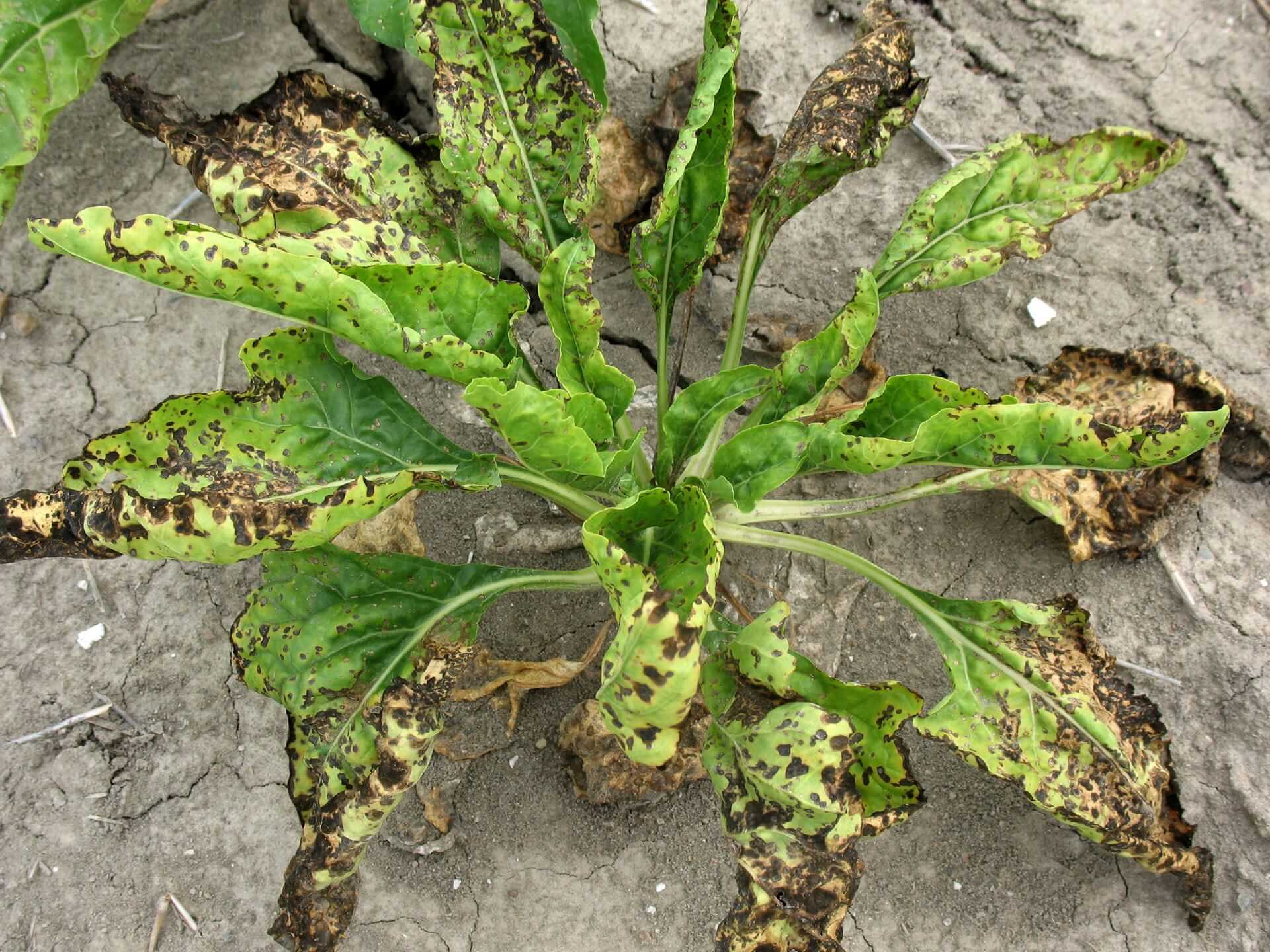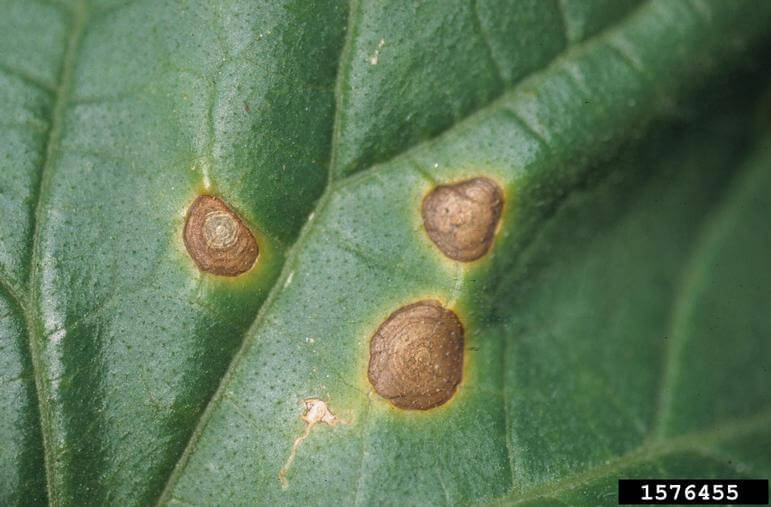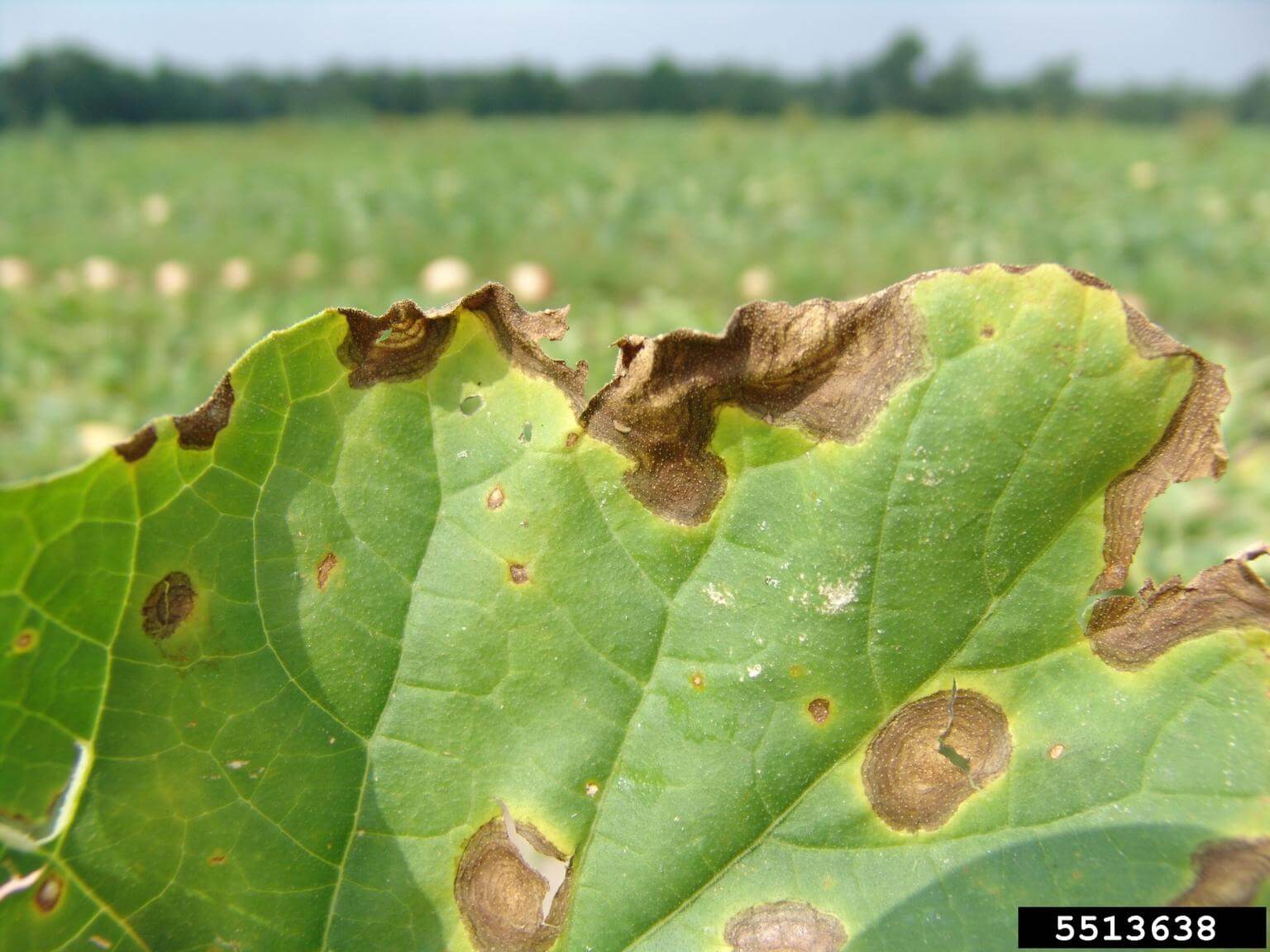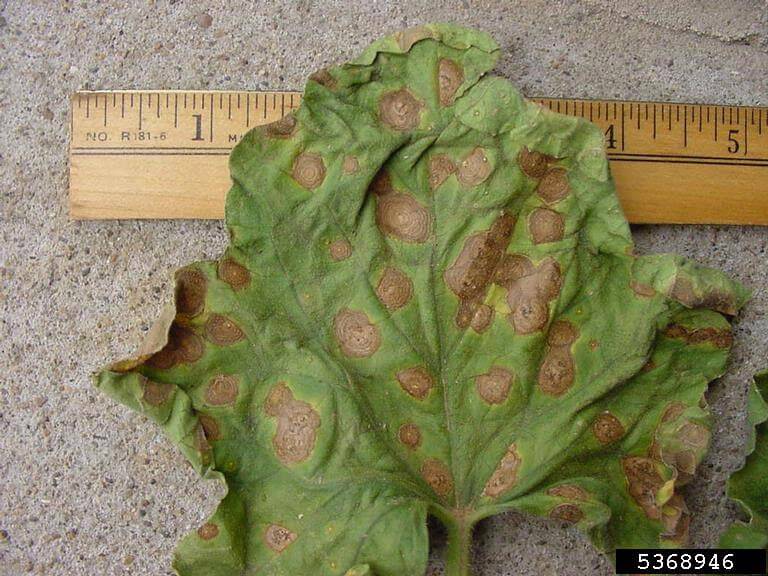
Alternariosis
Alternaria Tenuis
Pathogen:
Type:
Fungus
Risk:
HIGH

Remolacha de mesa
Alternariosis

WHO CAUSES IT?
Alternaria tenuis is a phytopathogenic fungus that affects a variety of crops, including beet. This fungus produces conidial spores that are dispersed mainly by wind and rain. These spores can remain viable in soil and crop residues for long periods. Infection begins when spores germinate in favorable conditions of high humidity and moderate temperatures, penetrating plant tissues through stomata or wounds. The fungus develops a mycelium that spreads between the host's cells, producing toxins that break down the plant's tissues. As the infection progresses, the fungus continues to produce spores that are released and dispersed to initiate new infections.
SYMPTOMS
Alternariosis caused by Alternaria tenuis in beet is characterized by the appearance of dark Taches on the leaves, which gradually enlarge and become necrotic. These Taches can coalesce, resulting in premature defoliation that affects photosynthesis and, therefore, plant growth and yield. Severely affected plants may show symptoms of wilting and poor overall development, compromising the quality and quantity of the harvest.
- Dark Taches on the leaves.
- Necrotic lesions that enlarge.
- Coalescence of stains.
- Premature defoliation.
- Reduction of photosynthesis.
- Wilting and poor development of the plant.


TEMPERATURE AND HUMIDITY
15°C - 25°C
80% - 90%
TRANSMISSION ROUTES
Wind, Rain, Contaminated soil, Infected crop remains, Contaminated agricultural tools
Do you want to remove this disease? Choose how you want to treat it.
TREATMENTS
Chemical treatments
• AZOXISTROBIN 20% + DIFENOCONAZOLE 12.5% [SC] P/V
• DIFENOCONAZOLE 25% [EC] P/V
• COPPER OXYCHLORIDE 35% (EXPR. IN CU) [WG] P/P
• CUPROCALCIC SULFATE 12.4% (EXPR. IN CU) [SC] P/V
• CUPROCALCIC SULFATE 20% (EXPR. IN CU) [WG] P/P
Treatments allowed in organic farming
• COPPER OXYCHLORIDE 35% (EXPR. IN CU) [WG] P/P
• CUPROCALCIC SULFATE 12.4% (EXPR. IN CU) [SC] P/V
• CUPROCALCIC SULFATE 20% (EXPR. IN CU) [WG] P/P
Biological treatments
-
Recommendations
- Crop rotation to reduce the accumulation of the fungus in the soil.
- Use of beet varieties resistant to Alternaria.
- Regular application of specific fungicides as a preventive and curative measure.
- Removal and destruction of infected crop remains.
- Improved soil drainage to avoid high humidity conditions.
- Constant monitoring of crops to detect the disease early.
- Implementation of proper growing practices, such as plant spacing to improve air circulation.
- Disinfection of tools and agricultural machinery to prevent the spread of the fungus.
Sponsored link
Sponsored link
Sponsored link
Sponsored link
Sponsored link
Sponsored link
Effective against all types of fungi
*The recommended treatments are recommendations based on the authorities' databases and in no way replace the guidelines established by the legislation of each country.
*Products shown are recommendations and not our own products. As Amazon Associates, we earn revenue from purchases of recommended products.
TREATMENTS
Homemade remedies
There are no home treatments
Natural allies
Chemical treatments
There are no treatments for this disease. Treatments are directed at the insect vectors that transmit it. See insect treatments.
RECOMMENDATIONS
- Check the back of the leaves frequently, especially in dry weather.
- Spray water on the leaves to increase humidity and prevent them from settling.
- Keep plants healthy with good watering and adequate light.
- If you see cobwebs or damage, clean the leaves with a damp cloth or pressurized water.
- Use potassium soap or neem oil every few days until they disappear.
REPELLENT PLANTS
Rosemary, Dill, Coriander
EFFECTIVE PRODUCTS TO ELIMINATE THIS DISEASE
Sponsored link
Sponsored link
Sponsored link
Sponsored link
Sponsored link
Sponsored link
Effective against all types of fungi
*The recommended treatments are recommendations based on the authorities' databases and in no way replace the guidelines established by the legislation of each country.
*Products shown are recommendations and not our own products. As Amazon Associates, we earn revenue from purchases of recommended products.






















